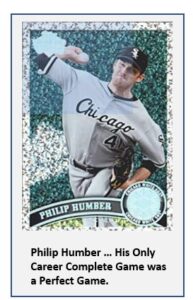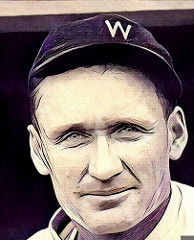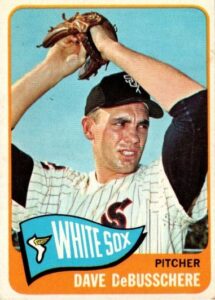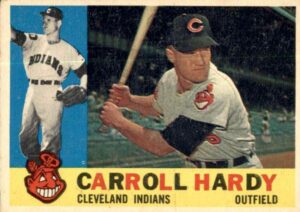Wise Words from a Pair of Bills
It never ceases to amaze me, how many of baseball’s wounds are self-inflicted.
Hall of Famer Bill Veeck
Baseball must be a great game to survive the fools who run it.
Hall of Famer Bill Terry
As Baseball Roundtable waits, less than patiently, for baseball’s owners and players to come to their senses (and thereby to an agreement), I continue to randomly search for baseball stories and stats that pique my interest. For example, looking at Giants’ right-hander Ted Lincecum’s stat line and game logs, I noticed that:
- Lincecum threw only two complete games in the last five seasons of his 10-season (2007-16) MLB career; and
- Both of those complete games were no-hitters.
As always with Baseball Roundtable, one thing led to another and I was reminded of the fact that Phil Humber threw just one complete game in his eight-season MLB career (2006-13) – and that outing was a Perfect Game. That led to Mike Fiers’ two career complete games – both no-hitters.
These observations led me to look even more deeply at pitchers who managed to throw MLB no-hitters, despite a minimal number of career complete games. As I began the search, I set my sights on pitchers with one no-hitter and fewer than three career complete games and those with multiple MLB no-hitters and fewer than ten career complete games. Since I do like charts, I developed two based on these criteria: one for pitchers no longer active and another for pitchers active in 2021 (who have a chance to pitch their way off the chart). Side note: As you might expect, given changes in the game (pitch counts, relief specialists, etc.), most of the pitchers on the charts began their MLB careers in the 2000’s.
In this post, I’ll present those charts, along with some info on each pitcher, as well as a couple of Baseball Round Table No-Hit Parade Extras.
Homer Bailey …. Two No-Hitters, Seven Career Complete Games, 245 Career Starts
Homer Bailey threw the last MLB no-hitter of the 2012 season and the first no-hitter of the 2013 season. The right-hander made 245 MLB appearances – and never pitched in relief in the majors. Bailey (with the Reds) no-hit the Pirates (in Pittsburgh) on September 28, 2012 (1-0), walking one and fanning ten. On July 2, 2013, he no-hit the Giants (in Cincinnati) by a 3-0 score, walking one and whiffing nine. Bailey pitched in 14 MLB seasons (2007-20 … Reds, Royals, A’s Twins) going 81-86, 4.56, with 1,157 strikeouts in 1,401 innings. Bailey’s given name, by the way, was David Dewitt Bailey Jr. His “Homer” nickname (which seemed unfortunate for a pitcher) honored his great grandfather.
High School High Roller
Homer Bailey was a first-round pick (Reds) in the 2004 MLB Draft – out of La Grange (TX) High School, where he had gone 41-4, 0.90 with 536 strikeouts in 298 innings.
________________________________________________
Bobo Holloman … No-Hitter, One Career Complete Game, 10 Career Starts
Alva Lee “Bobo” Holloman threw a no-hitter in his first MLB start (fifth appearance). On May 6, 1953, righty Holloman and his St. Louis Browns no-hit the Philadelphia Athletics in a 6-0 whitewash. It was the only complete game in Holloman’s one season (1953) career. Holloman walked five and fanned three. Notably, he made the no-no hard work for himself, by walking three batters in the top of the ninth inning. He made nine more starts that season, going 2-5, 5.40 in those appearances. His season and career stat line was 3-7, 5.23.
Making the Roundtable No-Hit Parade and Hit Parade
In Bobo Holloman’s first MLB start, he not only notched a no-hitter and his only MLB complete game, he also collected two hits and three RBI – his only major league hits and runs driven in.
____________________________________________
Baseball Roundtable No-Hit Parade Extra … Making Those Last Two Complete Games Count
Ted Lincecum had a pair of no-hitters, but his ten career complete games kept him off the chart. Lincecum, who led the National League with four complete games in 2009, had just two complete games over his final five MLB seasons (2012-16) – both were no-hitters. On July 13, 2013 (Could 13 be Lincecum’s lucky number?), Lincecum no-hit the Padres (in San Diego) as the Giants won 9-0. He walked four and struck out thirteen. On June 25 of the following season, he no-hit the Padres again in San Francisco. The final was 4-0 and Lincecum walked one and fanned six. The four-time All Star went 110-89 in ten MLB seasons (2007-16 … Giants Dodgers). He was also 5-2, 2.50 in the post-season.
Bud smith … No-Hitter, One Career Complete Game, 24 Career Starts
Southpaw Bud Smith threw his no-hitter in his rookie season, in his 11th MLB start (September 3, 1001). It was the 21-year-old Cardinal rookie’s fourth win (against two losses) in a season in which he would go a promising 6-3. 3.83. Smith walked four and whiffed seven in a 4-0 win over the Padres (in San Diego). Smith’s early promise faded. In 2002, he went 1-5, 6.94 and, in July, was traded to the Phillies in a multi-player trade. He did not pitch again in the major leagues.,
_____________________________________________
Philip Humber … One No-Hitter, One Career Complete Game, 51 Career Starts
 Phil Humber’s lone career complete game was not only a no-hitter, it was a PERFECT GAME. On April 21, 2012, Humber set down 27 straight Mariners in Seattle, with his White Sox winning 4-0. He fanned nine in the effort and threw 67 strikes in 97 pitches (69 percent). In his very next start, Humber lasted just five innings against the Red Sox, giving up nine earned runs on eight hits and three walks. Humber was not exactly a candidate for a “perfecto.” The righty pitched in eight MLB seasons (2006-13 … Mets, Twins, Royals, White Sox Astro), going 16-23, 5.31. The year he pitched his perfect game, his final stat line was 5-5, 6.44.
Phil Humber’s lone career complete game was not only a no-hitter, it was a PERFECT GAME. On April 21, 2012, Humber set down 27 straight Mariners in Seattle, with his White Sox winning 4-0. He fanned nine in the effort and threw 67 strikes in 97 pitches (69 percent). In his very next start, Humber lasted just five innings against the Red Sox, giving up nine earned runs on eight hits and three walks. Humber was not exactly a candidate for a “perfecto.” The righty pitched in eight MLB seasons (2006-13 … Mets, Twins, Royals, White Sox Astro), going 16-23, 5.31. The year he pitched his perfect game, his final stat line was 5-5, 6.44.
We’ll Take Phil
Philip Humber was a First Round draft pick (Mets – third overall pick) in the 2004 MLB draft – out of Rice University, where he had gone 35-8, 2.80, with 422 strikeouts in 353 2/3 innings over three seasons.
_______________________________________________
Hisashi Iwakuma … One No-Hitter, One Career Complete Game, 136 Career Starts
Hisashi Iwakuma pitched 11 seasons in Japan (and had been an All Star in multiple campaigns) before signing with the Mariners (as a 31-year-old) in 2012. He adjusted to MLB quickly. In his first three seasons with the Mariners, the right-hander went 38-20, 3.07 and was selected to the 2013 AL All Star squad. On August 12, 2015, he no-hit the Orioles (in Seattle ), as the Mariners triumphed 3-0. He walked three and fanned seven. In six MLB seasons (2012-17, all with the Mariners, Iwakuma went 63-39, 3.41.
Not First, But Almost
Hisashi Iwakuma was the second Japanese player to pitch an MLB no-hitter (after Hideo Nomo).
______________________________________________
Jonathan Sanchez … One No-Hitter, One Career Complete Game, 137 Career Starts
Giants’ lefty Jonathan Sanchez threw his no-hitter on July 10, 2009 – shutting down the Padres 8-0, while walking none and fanning 11. The first (and only baserunner) came with one out in the top of the eighth on an error by Juan Uribe, who had moved from 2B to 3B in the seventh inning. Sanchez came into the game 2-8, 5.30 on the season (16 appearances/13 starts). He finished the season 8-12, 4.24. Sanchez pitched in eight MLB seasons (2006-13 … Giants, Royals, Rockies, Pirates) and went 39-58, 4.70.
Jonathan Sanchez’ Dad Can Thank Randy Johnson for This One
On the night he threw his no-hitter, Jonathan Sanchez was slated to work out of the bullpen. Randy Johnson was scheduled to start for the Giants, but was a late (injury) scratch. And the rest is history. Oh, one final note, it was the first time that Sanchez’ father was in the stands to see him pitch in an MLB game.
______________________________________
Baseball Roundtable No-Hit Parade Extra … A Good Start for Bumpus
Charles Leander “Bumpus” Jones is the only MLB pitcher to throw a no-hitter in his first-ever MLB appearance. It happened a bit before my time – on October 15, 1892. Bumpus earned the (very) late (final-day-of-the-season) start with the Reds after a 24-3, 0.93 record with the Joliet Convicts/Aurora Indians of the Illinois-Iowa League. He tossed his no-hitter against the Pirates, striking out three and walking four in a 7-1 win. Of note is the fact that Jones ‘s no-hitter was the last one thrown with pitchers throwing from a box with the front line 50-feet from home plate and the back line 5 ½-feet farther back. The following season, the distance was stretched to the current 60’6” and Bumpus could not recreate the magic of that first appearance. In 1893, he went 1-4, 10.19 and never pitched in the majors again.
Chris Heston … One No-Hitter, Two Career Complete Games, 33 Career Starts
Right-hander Chris Heston pitched his no-hitter on June 9 , 2015 – as his Giants topped the Mets 5-0 in New York. Heston fanned eleven and walked none. It was the second – and final – complete game of Heston’s four- season MLB career (2014-17 … Giants, Mariners, Twins). Earlier that season (May 12), Heston had pitched a two-hit, complete game in an 8-1 win over the Astros. Heston ended the 2015 season at 12-11, 3.95. He had only one other victory in his MLB career. His final MLB stat line was 13-13, 4.55.
This Will Hurt You More than it Hurts Me
In his no-hitter Chris Heston hit three batters – a record for a no-hit performance.
___________________________________
Jose Jimenez … One No-Hitter, Two Career Complete Games, 38 Career Starts
On June 25 1999, Cardinals’ right-hander Jose Jimenez (rookie status intact, he pitched in just four games in 1998), found himself facing the Diamondbacks (and the imposing figure of five-time All Star Randy Johnson) in Arizona. Johnson was 12-4, 3.36 at the time (and had 60 MLB career complete games under his belt.). Jimenez came into the game 3-7, 6.69 on the season and had yet to toss an MLB complete game. Sanchez went the distance, giving up no hit and two walks, while fanning eight, as the Cardinals prevailed 1-0. (Johnson pitched a complete game five-hitter with 14 strikeouts.) Sanchez ended the season 5-14, 5.85. Johnson finished at 17-9, with a league-leading 2.48 ERA and a league -topping 364 strikeouts.
Sorry Randy, But I Got This
Jose Jimenez had only two complete games in his career. They came on June 25 and July 5, 1999. Both times, the opposing team was the Diamondbacks and the opposing starter was Randy Johnson. Sanchez’ Cardinals won both contests by scores of 1-0. Sanchez gave up a total of two nits and fanned 17 in the 18 innings, Johnson gave up nine hits, two runs and fanned 29.
Jimenez pitched in seven MLB seasons (1998-2004 … Cardinals, Rockies), going 24-44, 4.92. Notably, after his 1999 no-hitter season, he was traded to the Rockies, where he was converted to a reliever and racked up 102 saves over the next four seasons. He added eight saves for the Indians in 2004.
_________________________________________
Kent Mercker … One No-Hitter, Two Career Complete Games, 150 Career Starts
Southpaw Kent Mercker spent most of his 18-season MLB career as a reliever (542 relief appearances/150 starts). In his 150 starts, he pitched just two complete games. Both complete games came in 1994 and one was a no-hitter. It came on April 8, in Mercker’s first appearance of the season. He faced the Dodgers (in LA) and Mercker picked up a win (6-0), no-hitting the Dodgers (four walks, ten strikeouts). He threw the second and final complete game of his career on July 18 of that season – a two-hit, 3-2 win over the Pirates. Mercker finished the season 9-4, 3.45. Mercker pitched for nine teams in 18 MLB seasons (1989-2000, 2002-2006, 2008 … Braves, Orioles, Indians, Reds, Cardinals, Red Sox, Angels, Rockies, Cubs). He was 74-67, 4.16, with 25 saves over that time.
There’s More Than One Way to Get This Done
Kent Mercker is one of only four MLB pitchers to start a complete-game no-hitter and also start a game which ended in a combined (multi-pitcher) no-hitter.
__________________________________________
Mike Fiers …. Two No Hitters, Two Career Complete Games, 199 Career Starts
Mike Fiers has pitched just two complete games in 199 starts over eleven seasons – and both were no-hitters. On August 21, 2015, the right-hander notched his first-ever complete game. Pitching for the Astros, he no-hit the Dodgers in a 3-0 win in Houston. He walked three and fanned ten. Fiers came into the game at 5-9, 3.87 and finished the season at 7-10, 3.69. His second career complete outing came on May 7, 2019, pitching for the A’s. In that contest, he no-hit the Reds (a 2-0 win), walking two and fanning six. He came into that game 2-3, 6.81. The no-no seemed to turn his season around. He won his next 11 decisions and finished the year at 15-4, 3.90.
Ups and Downs
Mike Fiers had his ups and down on May 7, 2015. He started for the Brewers against the Dodgers that day. With the game tied at 1-1 in the top of the fourth, Fiers had an inning in which he issued three four-pitch walks (one intentional) and gave up a pair of singles. (Two runs scored in the inning.) In his next frame, he pitched an Immaculate Inning – nine pitches, three outs, three strikeouts.
Fiers has pitched in 11 MLB seasons (2011-21 … Brewers, Astros, Tigers, A’s), going 75-64, 4.07. He pitched in just two games in 2021 due to elbow issues.
_______________________________________
Jake Arrieta … Two No-Hitters, Six Complete Games, 279 Starts
Cubs’ Righty Jake Arrieta threw his first no-hitter in his sixth MLB season (2015) – a year when he led the National League in wins (22), starts (33), complete games (four) and shutouts (three). Going into the season, Arrieta had just one complete game in 97 career starts. He threw the no-hitter on August 30 in his 27th start of the 2015 seasons (his 124th career start), as the Cubs topped the Dodgers 2-0 in Los Angeles. Arrieta, in running his season record to 17-6, walked just one and fanned 12. Arrieta finished the game with a flourish, leaving no doubt, as he struck out all three hitters he faced i the ninth inning.
Arrieta’s second no-hitter came just ten starts later – on April 21, 2016, as the Cubs clobbered the Reds 16-0 in Cincinnati. In that one, Arietta walked four and fanned six. Since that 2016 no-hitter, Arriet has started 118 games without going the distance. He finished the 2016 season at 18-8, 3.10. Arrieta’s has pitched in 12 MLB seasons (2010-21 … Orikoles, Cubs, Phillies and Padres), going 115-93, 3.98. In an injury-interrupted 2021 season, he was 5-14, 7.39 for the Cubs and Padres.
What a Second Half
Jake Arrieta, although he won the NL Cy Young Award in 2015, did not make the All Star team that season. He was 10-5, 2.66 before the break and a sparkling 12-1, 0.75 after the break.
_______________________________________
Tyler Gilbert … – One No Hitter, One Career Complete Game, Six Career Starts
Diamondbacks’ rookie left-hander Tyler Gilbert threw a no-hitter on August 14 of last season – in his fourth MLB appearance and his first MLB start. The Diamondbacks topped the Rockies 7-0 in Gilberts no-no. He walked three and struck out five. Gilbert finished 2021 at 2-2, 3.15.
______________________________________
Alec Mills … One No Hitter, One Career Complete Game, 37 Career Starts
On September 13, 2020, Cubs’ righty Alex Mills – in his 15th MLB start – cruised to a 12-0 win over the Brewers in Milwaukee, walking three and fanning five. It was part of the 28-year-old’s 5-5, 4.48 record in his fourth MLB season. Mills has played in five MLB seasons (2016, 2018-21 … Royals, Cubs), going 12-13, 4.60. In 2021, he was 6-7. 5.07 for the Cubs.
______________________________________
Spencer Turnbull … One No Hitter, One Career Complete Game, 53 Career Starts
Spencer Turnbull no-hit the Mariners (in Seattle), on May 18, 2021, winning by a 5-0 score. The 28-year-old righty (in his fourth MLB season) walked two and fanned nine in the effort. It was his first MLB complete game and came in his 51st MLB start. Turnbull’s season was cut short in early Junie by arm issues that eventually required Tommy John surgery. He finished the season at 4-2, 2.88 and with a career mark of 11-15, 4.25. Turnbull was selected by the Tigers in the second round of the 2014 MLB Draft (out of the University of Alabama).
_______________________________________
John Means …. One No Hitter, One Career Complete Game, 63 Career Starts
On May 5 of last season, Orioles’ lefty John Means pitched the first (and still only) complete game of his four-season MLB career in a 6-0 Baltimore victory over the Mariners (in Seattle). Means faced the minimum 27 batters, gave up no hits, did not walk a batter, did not hit at batter and there were no errors committed in the game. Yet, he did not record a perfect game. In fact, he lost the perfect outing on a strikeout. At least it came early. In the bottom of the third inning, Seattle left-fielder Sam Haggerty swung at a 1-2 breaking pitch in the dirt that catcher Pedro Severino couldn’t handle. Haggerty made it to first (advancing on the third-strike rule) on what was rule a wild pitch. (It was one of 12 Means’ strikeouts in the game). On the very next pitch, Haggerty was caught stealing. And, as it turned out, he would be the only Seattle baserunner of the game. It’s the only MLB game in which a perfect game has been lost on a strikeout (dropped third strike or wild pitch.)
Making That First Pitch Count
In his May 5, 2021, no-hitter, John Means faced the minimum 27 batters and recorded a first-pitch strike on 26 of them.
Means who was 4-0, 1.37 after the no-hitter, ended the season 6-9, 3.62. After four seasons, all with Baltimore, the 28 year-old’s MLB stat line is 20-24, 3.82.
________________________________________
Joe Musgrove … One No Hitter, Two Career Complete Games, 114 Career Starts
On April 9, 2012, the Padres’ Joe Musgrove no-hit the Rangers (by a 3-0 score) in Texas. He walked none and fanned ten. The only base runner was Joey Gallo, hit by an 0-0 pitch in the fourth inning. It was Musgrove’s first MLB complete game and came in his 85th MLB start. On August 27, the right-hander tossed his second complete game – a 5-0, two-hit (two walks/nine whiffs) road win over the Angels. Musgrove finished the season 11-9, 3.18, with 203 strikeouts in 181 1/3 innings. His career MLB record (2016-21 … Astros, Pirates, Padres) is 40-47, 4.02. He was a first round pick (Blue Jays) in the 2011 MLB Draft, right out of Grossmont High School in El Cajon, CA.
Like a Rocket
The season before his 2016 MLB debut, Joe Musgrove made a rapid climb in the Astros’ system. He was 4-1, 1.88 for the A-Level Quad Cities River Bandits; 4-0, 2.40 for the High-A Lancaster JetHawks; and 4-0, 2.20 for the Double-a Corpus Christi Hooks. In 2016, he was 7-4, 2.74 at Double A and Triple A before his call up.
____________________________________
Carlos Rodon …. One No Hitter, Two Career Complete Games, 116 Career Starts
The White Sox‘ Carlos Rodon notched his first complete game early in his MLB career – in his rookie season and in just his 17th career start (August 17, 2015). Rodon went the distance in a 2-1 road loss to the Angels. His next complete game came on August 14, 2021 – a no-hit, 8-0 win over the Tigers. In that one, he walked none and fanned seven. In that game, the lefty was perfect with one-out in the ninth, when he hit Tigers’ catcher Roberto Perez with an 0-2 pitch. Perez proved to be the only Tigers’ baserunner in the game. Rodon finished the 2021 season 13-5, 2.37. His career record (2015-21), all with the White Sox, is 42-38, 3.79. Rodon was a first round pick, (White Sox) in the 2014 MLB Draft – out of North Carolina State University, where he went 25-10, 2.24 with 436 strikeouts in 345 2/3 innings over three seasons.
_____________________________________________
James Paxton … One No Hitter, Two Career Complete Games, 137 Career Starts
Southpaw James Paxton has pitched in nine MLB seasons (2013-21 … Mariners, Yankees). He threw his first MLB complete game in his sixth MLB seasons (82nd career start) – and it was a no-hitter. It came on May 8, 2018, in a 5-0 Seattle win over the Blue Jays in Toronto. Paxton walked tree and fanned seven in that game.
Home Sweet Home
James Paxton is the first Canadian to pitch a no-hitter in Canada.
Paxton’s second career complete game came just two starts later (May 19), in a 7-2 win over Detroit (in Seattle). Paxton finished the 2018 season at 11-6, 3.76. His career record is 57-33, 3.59, with 831 strikeouts in 745 2/3 innings. Note: Paxton pitched in just one game in 2021 (Tommy John surgery).
How Rare is a Complete Game These Days?
James Paxton’s two complete games and one complete-game shutout in 2018 were good enough to tie for the MLB lead in those categories. That points to plenty more pitchers making their way onto these charts in the future.
Primary Resources: Baseball-Reference.com; TheBaseballCube.com
 Baseball Roundtable is on the Feedspot list of the Top 100 Baseball Blogs. To see the full list, click here.
Baseball Roundtable is on the Feedspot list of the Top 100 Baseball Blogs. To see the full list, click here.
I tweet baseball @DavidBBRT
Follow/Like Baseball Roundtable’s Facebook Page here. More baseball commentary; blog post notifications; PRIZES.
Member: Society for American Baseball Research (SABR); Negro Leagues Baseball Museum; The Baseball Reliquary.






























